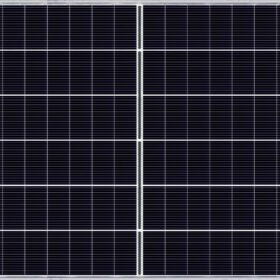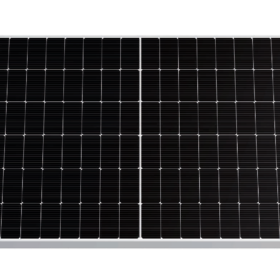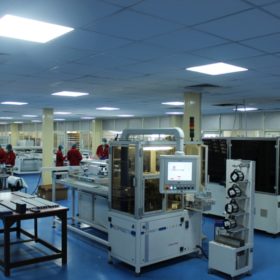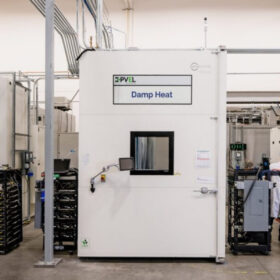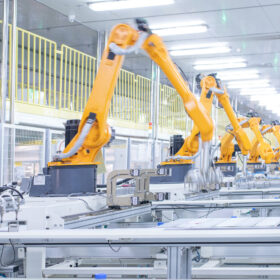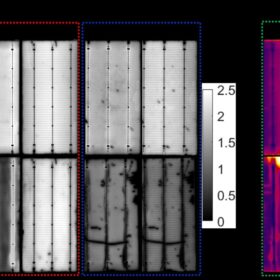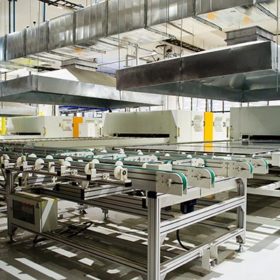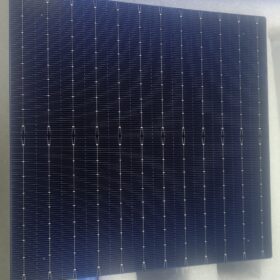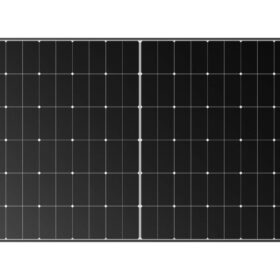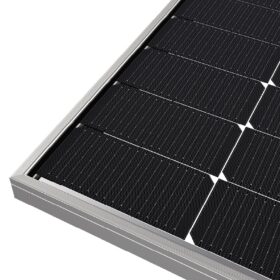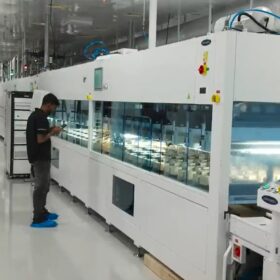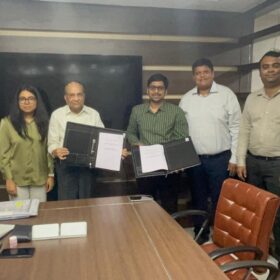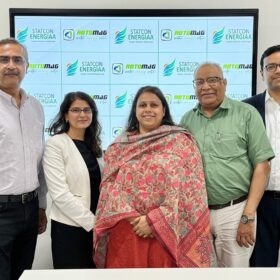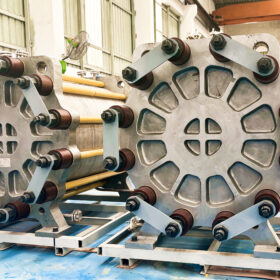Canadian Solar unveils 700 W bifacial TOPCon solar modules
Canadian Solar is offering six versions of its 132-cell TOPBiHiKu7 solar modules, with power outputs ranging from 675 W to 700 W and efficiencies ranging from 21.7% to 22.5%. They have an efficiency range of 26.1% to 27.0%, with a bifacial gain of 20%.
Gautam Solar unveils n-type TOPCon modules at Intersolar Europe
The Indian manufacturer is launching n-type TOPCon solar modules for residential, commercial and industrial, and utility-scale markets at Intersolar Europe 2023. It is offering these modules in all black, silver frame, glass-to-glass bifacial, and light-weight bifacial variants.
Gautam Solar to add 500 MW of TOPCon panel production capacity
The Indian manufacturer is expanding its solar module production capacity to 1 GW by adding a 500 MW TOPCon line from Jinchen. The new line will start production by September.
PVEL releases ninth edition of ‘PV Module Reliability Scorecard’
The PV Evolution Labs (PVEL) 2023 Scorecard identifies 250 solar modules from 35 manufacturers as “top performers.”
PV manufacturing capacity hit 600 GW in 2022
The new edition of the International Technology Roadmap for Photovoltaic (ITRPV), published this week, finds that 295 GW of PV modules was shipped in 2022, and that prices for silicon PV modules fell by 7% over the year. The report finds that price premiums for n-type modules are now marginal, and the technology grew to represent 15% of the market, and is expected to keep growing over the coming decade.
Scientists warn of heat-induced failure risks in HJT glass-backsheet PV modules
University of New South Wales researchers have identified four failure modes caused by damp heat in heterojunction solar panels with a glass-back sheet configuration. The failures could result in power losses ranging from 5% to 50%.
Tata Power’s 4 GW solar cell line will be ready by December
Tata Power is building a greenfield 4 GW solar cell and module factory in the Indian state of Tamil Nadu.
Solar testing group warns of degradation risk for TOPCon
The Renewable Energy Test Center (RETC) raised the issue of ultraviolet-induced degradation of the trending technology in its PV Module Index 2022.
Chinese module prices to fall by 15% from Q4 2022 to Q4 2023, says CEA
Solar module prices will be pressured by rising industrial capacity this year, with capacities doubling in the ingot/wafer stages and potentially quadrupling for polysilicon by 2027, according to the latest PV pricing report from Clean Energy Associates (CEA).
Case study demonstrates 5% energy yield boost for n-type TOPCon modules
Data collected from a 30 MW PV project in China’s Tianjin Province demonstrates that n-type tunnel oxide passivated contact (TOPCon) modules achieve a little more than 5% more energy yield than p-type PERC. Analysis by JinkoSolar, which supplied its TOPCon modules to the project, credits the n-type modules’ increased performance to a better temperature coefficient in the project’s hot climate, higher bifaciality and lower degradation.
